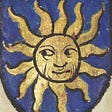You Have Bed Bugs Now What?
"Termites have actually survived on Earth for more than 250 million years and become part of the community, handy in breaking down decaying wood in the environment. When they get in your house, however, they can cause expensive damage. They are not quickly identified, and can do their unclean work long before a property owner notices any damage. The finest protection against termites in your house is learning what they look like and the indications of damage they produce.In Massachusetts, the most common types of termites swarm on a warm day after a rainfall. Swarms might take place throughout the winter in heated structures. Eastern subterranean termites (which are the most typical kind of termite in MA) normally swarm throughout the day from March to May. However regardless of these times, damage from termites can be found at any time of the year.There have to do with 45 types of termites found in the U.S., each of which falls into among the three main termite types - subterranean, drywood and dampwood. Each species has special biology and behavior that affect what part of the nation they reside in, where they develop their nests and their probability to harm homes. Massachusetts is at high threat for subterranean termites. But, numerous cases of drywood and dampwood termites are discovered each year in MA too.Subterranean termites reside in the soil and construct the biggest nests of any bug in the U.S. Their nests connect to each other utilizing channels called ""mud tubes"" which help protect them, hide them and likewise supply food. Food sources consist of trees, fence posts and structural timbers in homes. Below ground termites, which can reside in every U.S. state other than Alaska, are accountable for most of termite damage in this nation.Drywood termites usually reside in wood, such as dead trees, structural timbers or wood floorings. Drywood termites do not need contact with soil to grow, and they can likewise cause significant damage to houses. Drywood colonies tend to be smaller than below ground termite colonies, so they usually cause damage at a slower rate. They are also challenging to identify, so considerable internal damage can be done prior to you see any external indications of damage to your home.Dampwood termites live in wood with high moisture content. The majority of dampwood termites do not need contact with the soil, so they are seldom found in homes or other man-made structures, given that wood in these structures usually does not have adequate moisture.To secure your house, you need to learn how to be a termite investigator. The primary step to recognize termites is to recognize a termite as a termite. Many homeowners may stop working to make this difference. To the untrained eye, swarming termites may appear like flying ants and worker termites may appear like any insect larvae.It is also advised that property owners in areas of the U.S. prone to termite infestation, such as Massachusetts, schedule annual assessments by termite control specialists. This is extremely crucial considering that a home with damage from termites frequently looks the same as any other house on the surface. Termites can construct nests hidden inside walls, triggering damage for years prior to it becomes evident. Termite control specialists are trained to identify signs of termite activity, possibly prior to the colony has actually harmed the wood inside a home.There are likewise some indications of termite problem you can search for. Below ground termites may be identified by the sudden development of winged termites, likewise called swarmers, or by the existence of mud tubes and wood damage. A ""swarm"" is a group of adult male and female reproductives (i.e. termites that can reproduce and increase their numbers in your house) that leave their nest in an attempt to set and initiate new colonies.Large numbers of winged termites swarming from wood or the soil typically are the first obvious indication of a nearby termite nest. Swarming happens from fully grown colonies that normally contain numerous thousand termites.When temperature and wetness conditions are beneficial, normally on warm days following a rainfall, swarming takes place throughout a brief duration of typically less than an hour. The insects then quickly shed their wings. Since they are attracted to light, you may discover proof that a swarm happened inside when you find wings in window sills, cobwebs, or on other furniture. The existence of winged termites or their shed wings inside a house ought to be a warning of a termite infestation.Other common indications of termite damage consist of:Discolored or drooping sheetrock on the ceiling or wallsFloorings that buckle or sagLoose tilesHardwood flooring slats that pop upLaminate floorings that bubble up or droopTiny determine holes in drywall (where termites have harmed the paperboard).Bubbling or peeling paint.Damaged wood that collapses easily.Jammed doors or windows.Wood that sounds hollow when tapped.Specialists also are trained to recognize termites by their habits. Subterranean termites construct mud tubes, which can be seen on a house's foundation. Drywood termites push fecal pellets called frass through little holes they make. These pellets form little mounds near wood damage.The pattern of wood damage also helps a pest control expert identify the kind of termite triggering the damage. Below ground termites consume along the wood grain, leaving wood with a honeycomb appearance. Drywood termites eat across and with the grain, excavating big rooms linked by tunnels."






